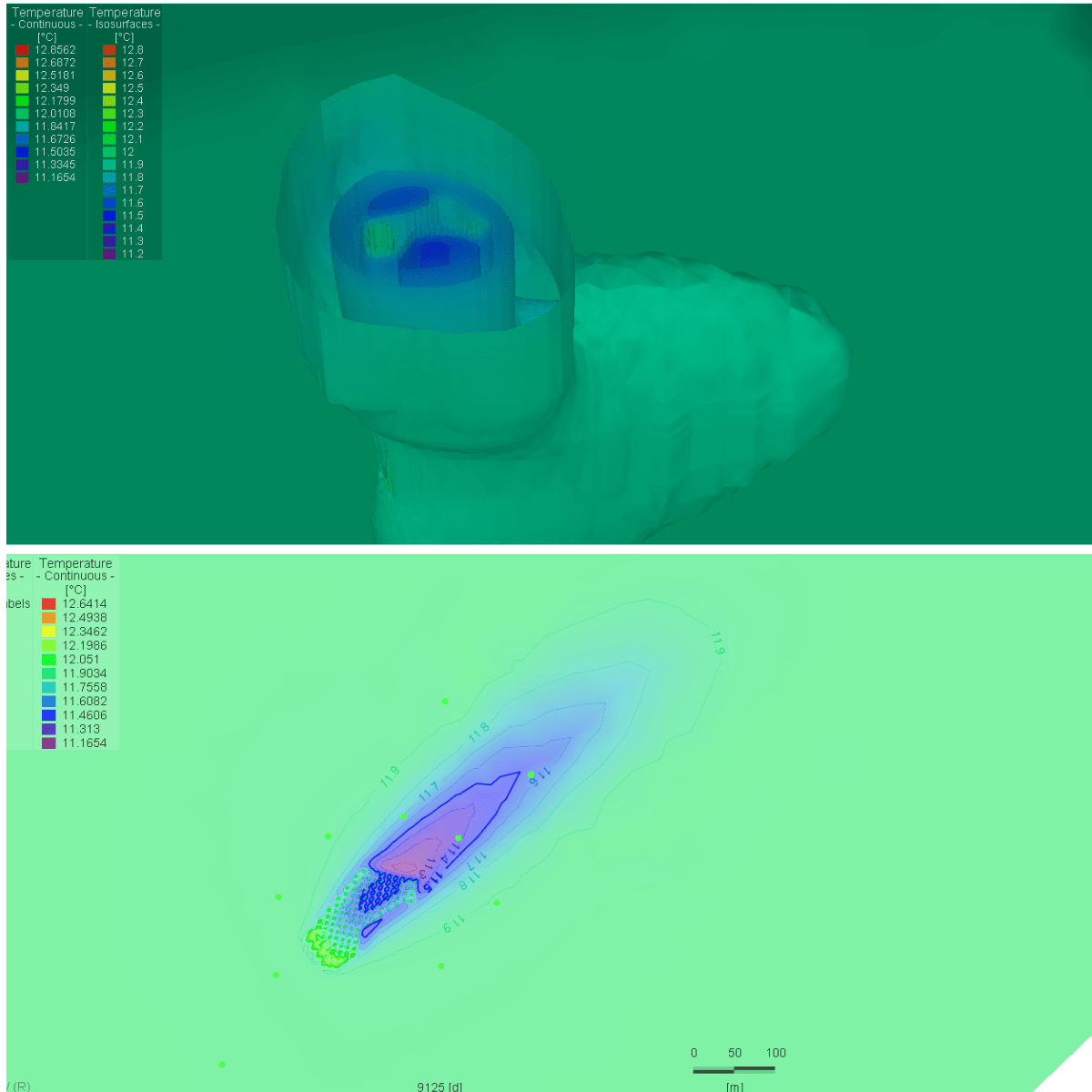Geothermal energy as a renewable energy increasingly offers the possibility to operate the energy supply/building air conditioning of residential and non-residential buildings not only in an ecologically sustainable way, but also economically. Near-surface geothermal energy down to depths of about 100 to 200 m makes use of the geothermal heat of the subsoil and also the possibility of using the subsoil as a heat reservoir. Depending on the geothermal system (closed geothermal probes, open wells, etc.), the natural conditions of the underground such as the groundwater (flow conditions, temperature, etc.) are more or less interfered with. Negative impacts on the surrounding area, be it the environment or neighbouring water rights, can be ruled out.
Depending on the system, plant size and site conditions of a near-surface geothermal plant to be planned, a corresponding permit must be obtained from the competent authorities in the course of a water rights procedure. In this context, it may be required by the authorities to simulate the plant operation in a thermohydrodynamic model in order to be able to justifiably exclude negative impacts. In addition to considering the possible effects on the environment, it is of course quite reasonable to simulate or forecast one's own safe plant operation by means of a thermo-hydrodynamic model. In this case, a model period of at least 25 years is usually selected in order to be able to estimate the long-term effects of the planned plant.
The basis of such a heat model is the groundwater flow model. Firstly, because groundwater plays an important role in the heat balance of the soil due to its comparatively constant temperature, high heat capacity and its ability to transport heat convectively [1]. In simplified terms, groundwater can be regarded as a natural and sustainable energy supplier. On the other hand, groundwater is assigned special importance in some areas due to its use for drinking water production. It is equally important to preserve the natural state of the water and thus the ecological habitat.
The first step in the development of a groundwater model is a comprehensive data research and the creation of a holistic model concept. In addition to the model area delimitation, the boundary conditions to be selected and the subsurface properties to be incorporated, a spatial discretisation of the model area must also be carried out. Furthermore, different settings have to be selected for the temporal discretisation depending on the problem. When considering constant flows, in which the setting of an equilibrium state is expected, the use of a stationary model makes sense. However, if changing flow directions are to be simulated, e.g. directional fluctuations over the course of a year, the stationary model must be extended to a transient model by implementing time series. The selected spatial and temporal discretisation has a decisive influence on the model accuracy, but also on the computing time and must be chosen depending on the problem and the available data density. Furthermore, the model must be calibrated and finally validated using existing data to ensure that the model delivers plausible results.
The groundwater model now obtained can then be extended to a thermohydrodynamic model in which additional heat extraction (heating period in winter) or heat input (e.g. building temperature control in summer) from the ground is simulated. In the case of pure heating operation and thus heat extraction, a temperature plume with lower temperatures forms in the long term compared to the unaffected level (see figure). In addition to the pure heating case, the geothermal systems can also be used for building temperature control (e.g. in summer). Supplementing the heat input by using waste heat (e.g. from server rooms, cold rooms) also offers a good opportunity to significantly reduce the impact of the system operation on the surroundings (here: reduction of the temperature drop/plume), so that a combined solution of heating and cooling is a very sustainable way to generate domestic heat [1].
Figure 1: 3D temperature distribution over the soil depth for a borehole heat exchanger system after 25 years of operation (surfaces with the same temperature)
Figure 2: 2D representation of the temperature plume [°C] of a borehole heat exchanger system after 25 years of operation.
#mullandpartner
#engineeringforabettertomorrow
#Geothermal energy
#Energy
#Groundwater
#Sustainable
#Modelling
#mupgroup

